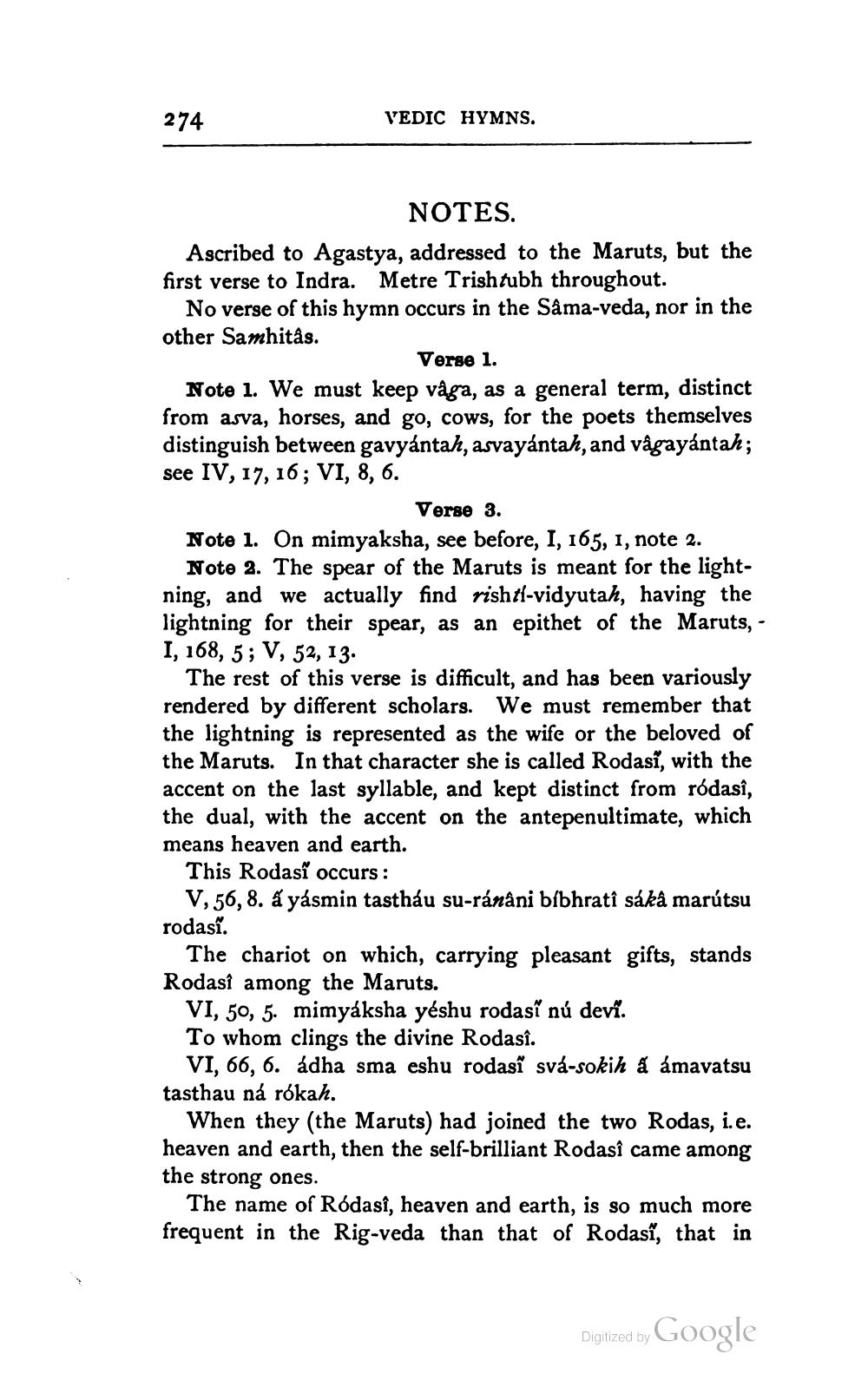________________
274
VEDIC HYMNS.
NOTES. Ascribed to Agastya, addressed to the Maruts, but the first verse to Indra. Metre Trishtubh throughout.
No verse of this hymn occurs in the Sama-veda, nor in the other Samhitas.
Verse 1. Note 1. We must keep vaga, as a general term, distinct from asva, horses, and go, cows, for the poets themselves distinguish between gavyántah, asvayántah, and vågayántah; see IV, 17, 16; VI, 8, 6.
Verse 3.
Note 1. On mimyaksha, see before, I, 165, 1, note 2.
Note 2. The spear of the Maruts is meant for the lightning, and we actually find rishti-vidyutah, having the lightning for their spear, as an epithet of the Maruts, - I, 168, 5; V, 52, 13.
The rest of this verse is difficult, and has been variously rendered by different scholars. We must remember that the lightning is represented as the wife or the beloved of the Maruts. In that character she is called Rodass, with the accent on the last syllable, and kept distinct from rodasî, the dual, with the accent on the antepenultimate, which means heaven and earth.
This Rodasi occurs:
V, 56, 8. á yasmin tastháu su-ránâni bíbhratî sákå marútsu rodasi.
The chariot on which, carrying pleasant gifts, stands Rodasî among the Maruts.
VI, 50, 5. mimyáksha yéshu rodasî nú deví. To whom clings the divine Rodasî.
VI, 66, 6. ádha sma eshu rodasî svá-sokih à ámavatsu tasthau ná rókah.
When they (the Maruts) had joined the two Rodas, i.e. heaven and earth, then the self-brilliant Rodasî came among the strong ones.
The name of Ródasî, heaven and earth, is so much more frequent in the Rig-veda than that of Rodasî, that in
Digitized by
Digitized by Google




